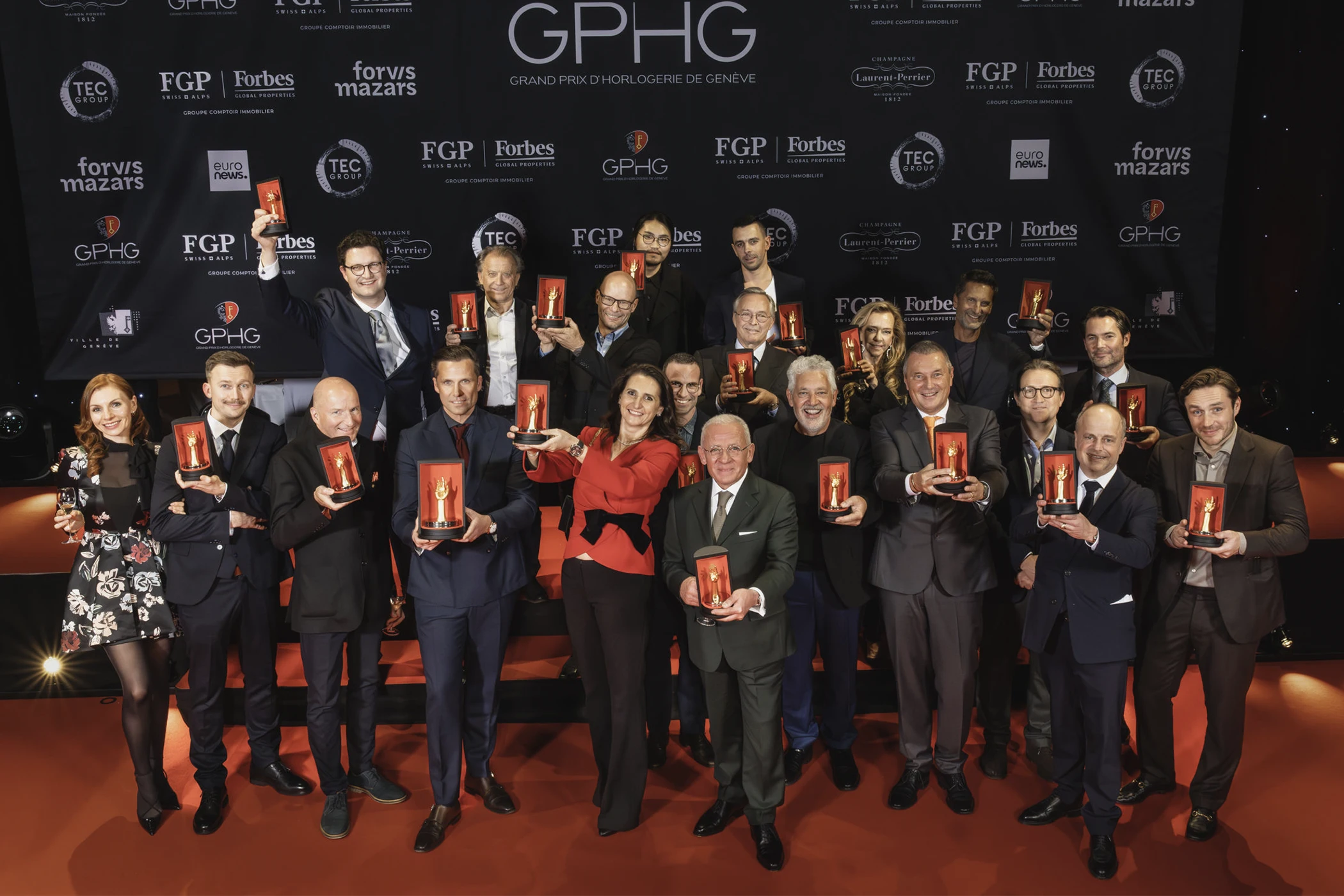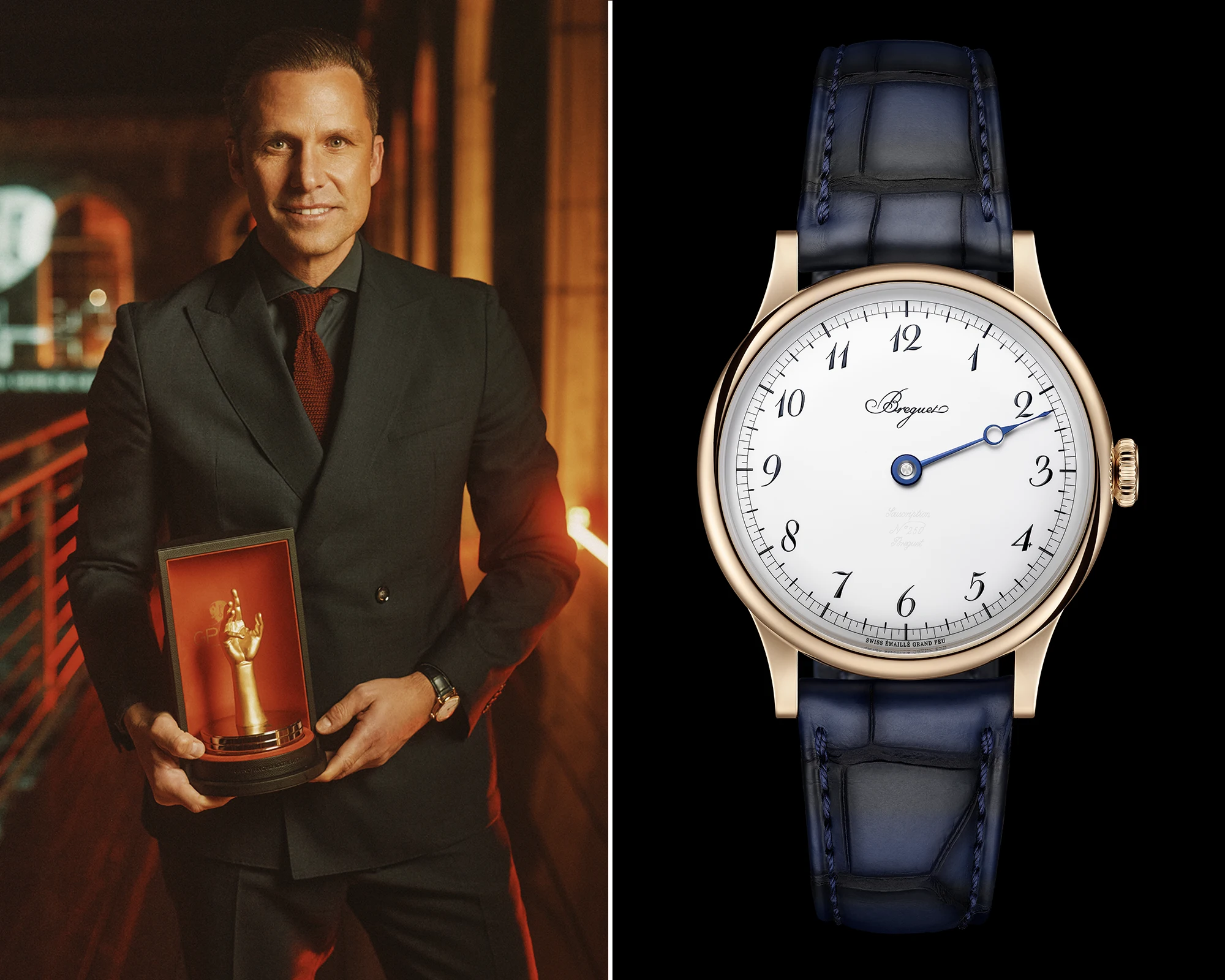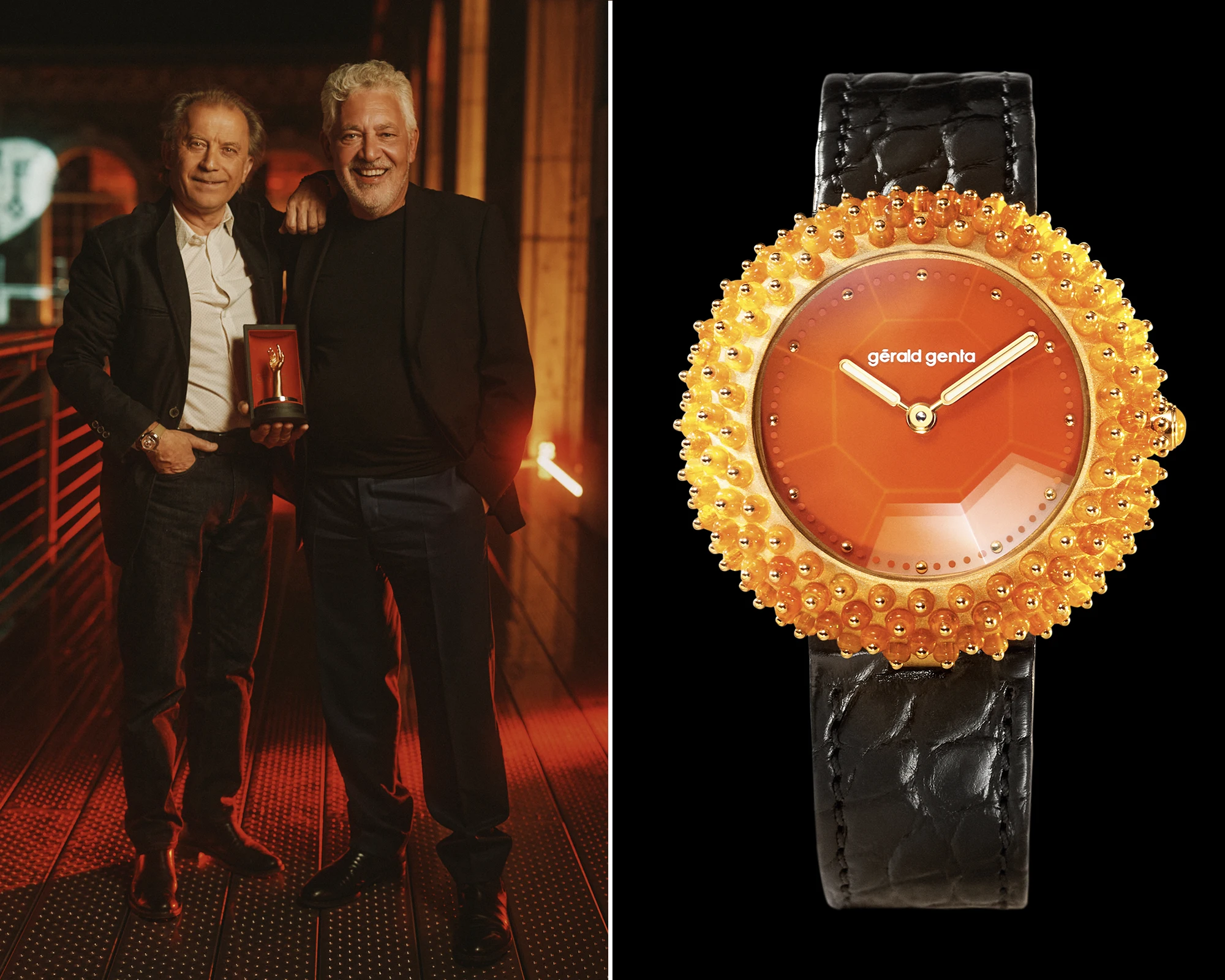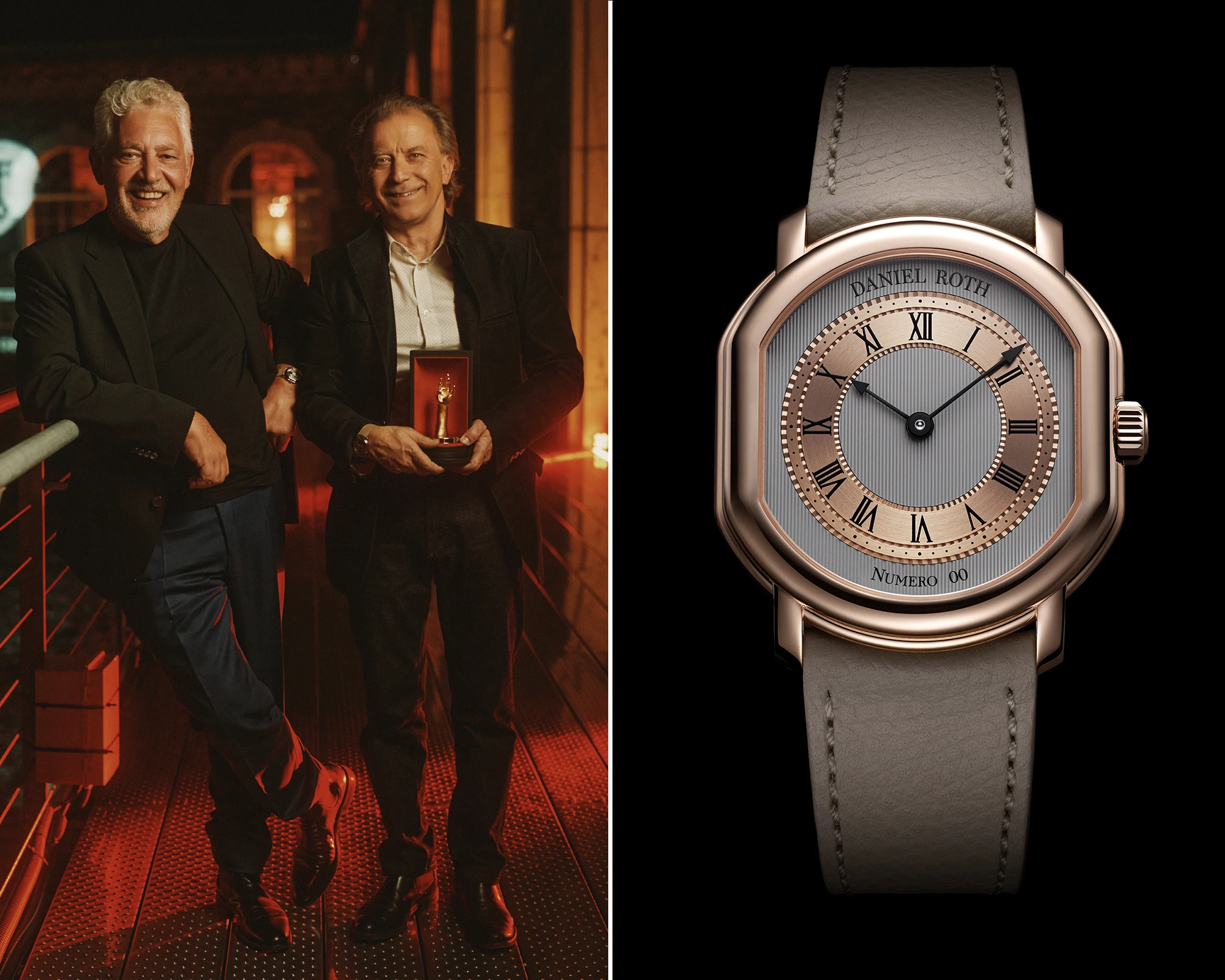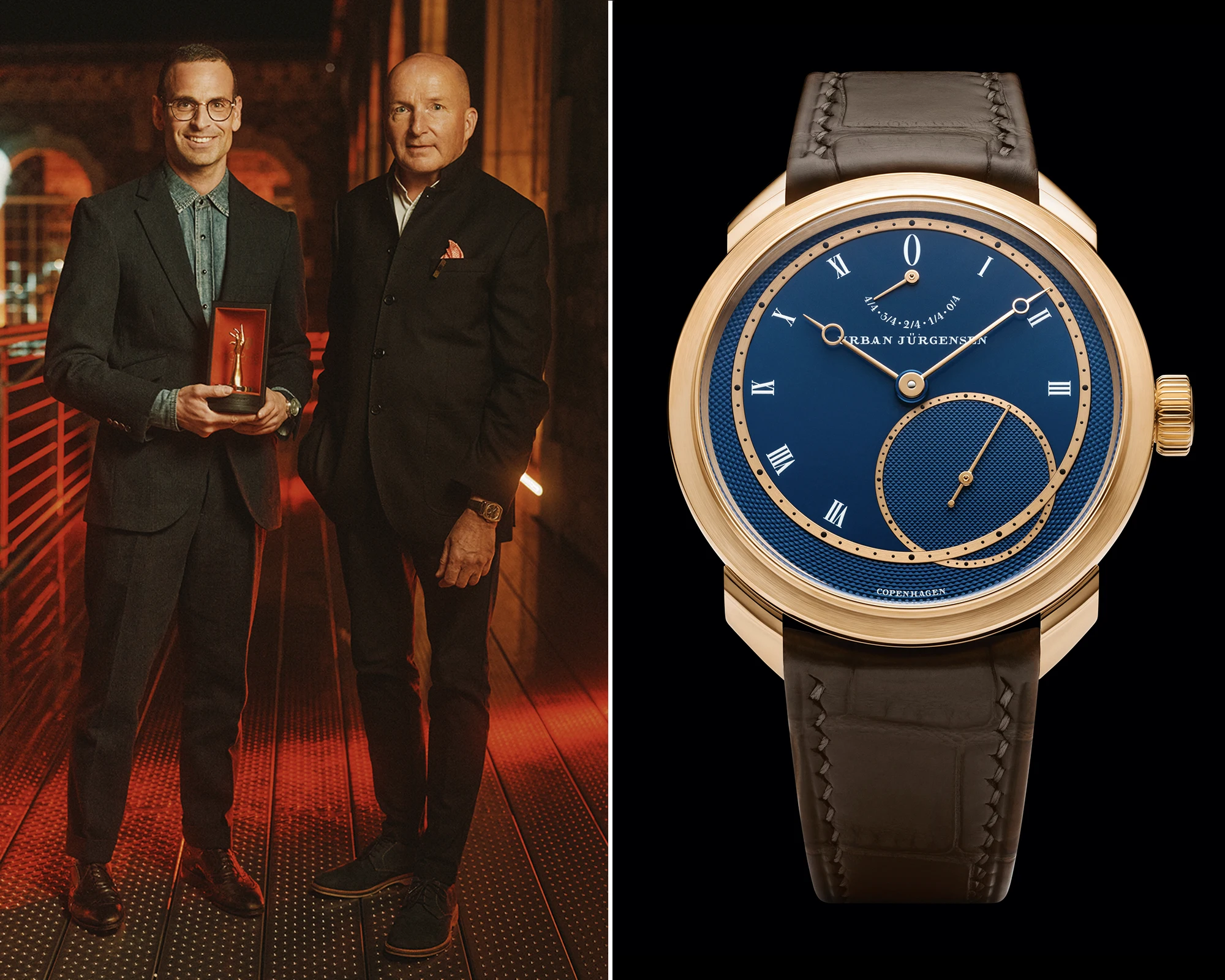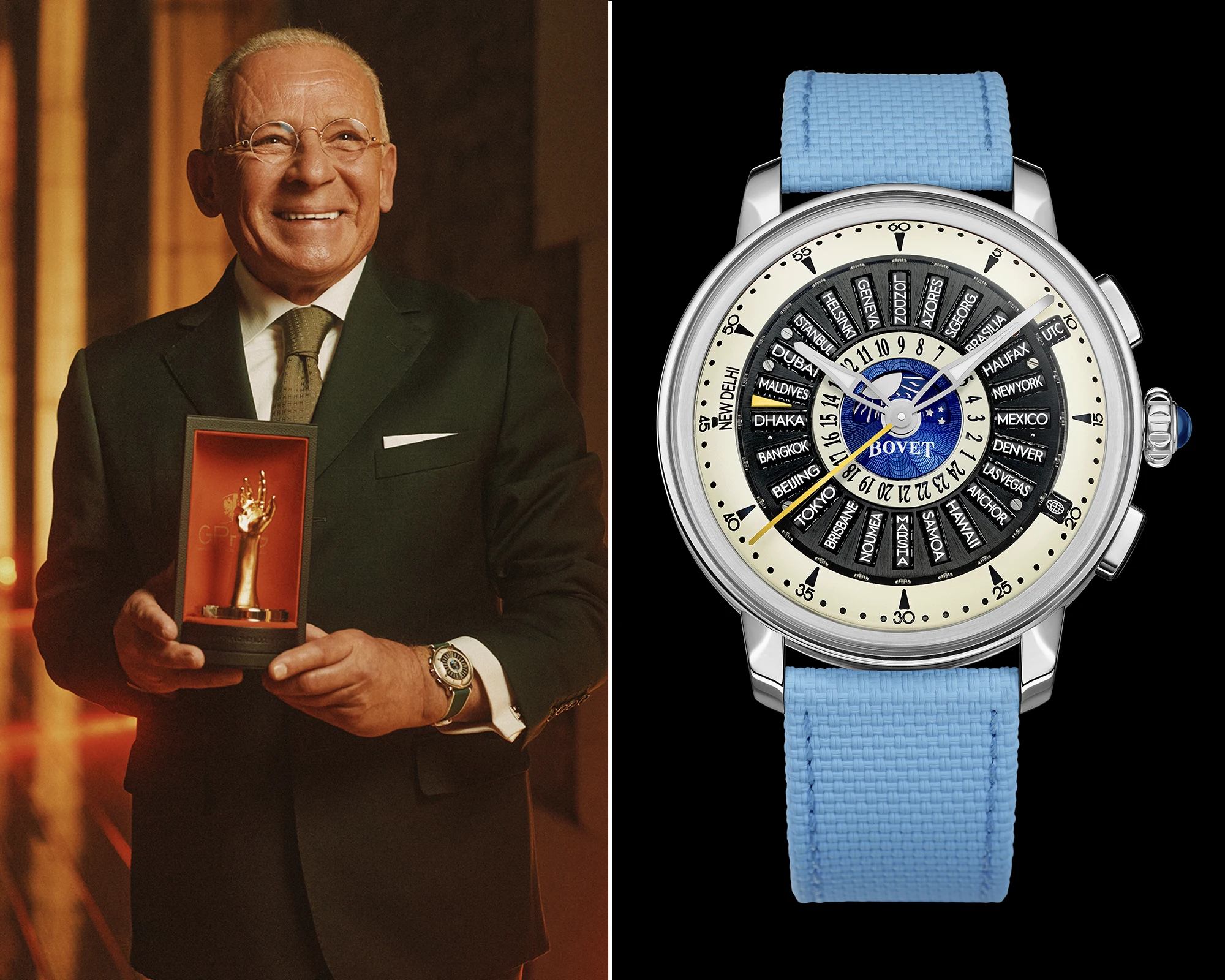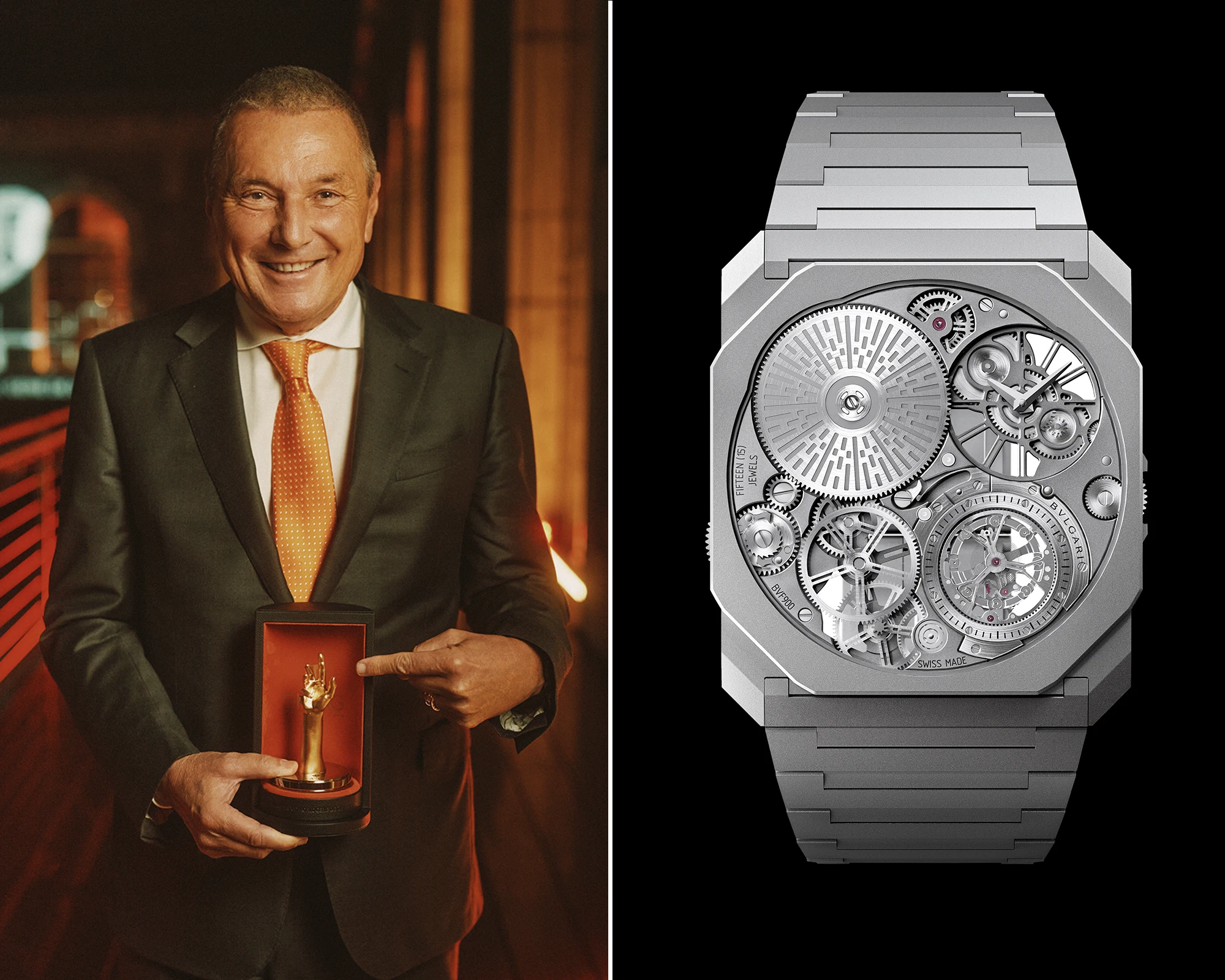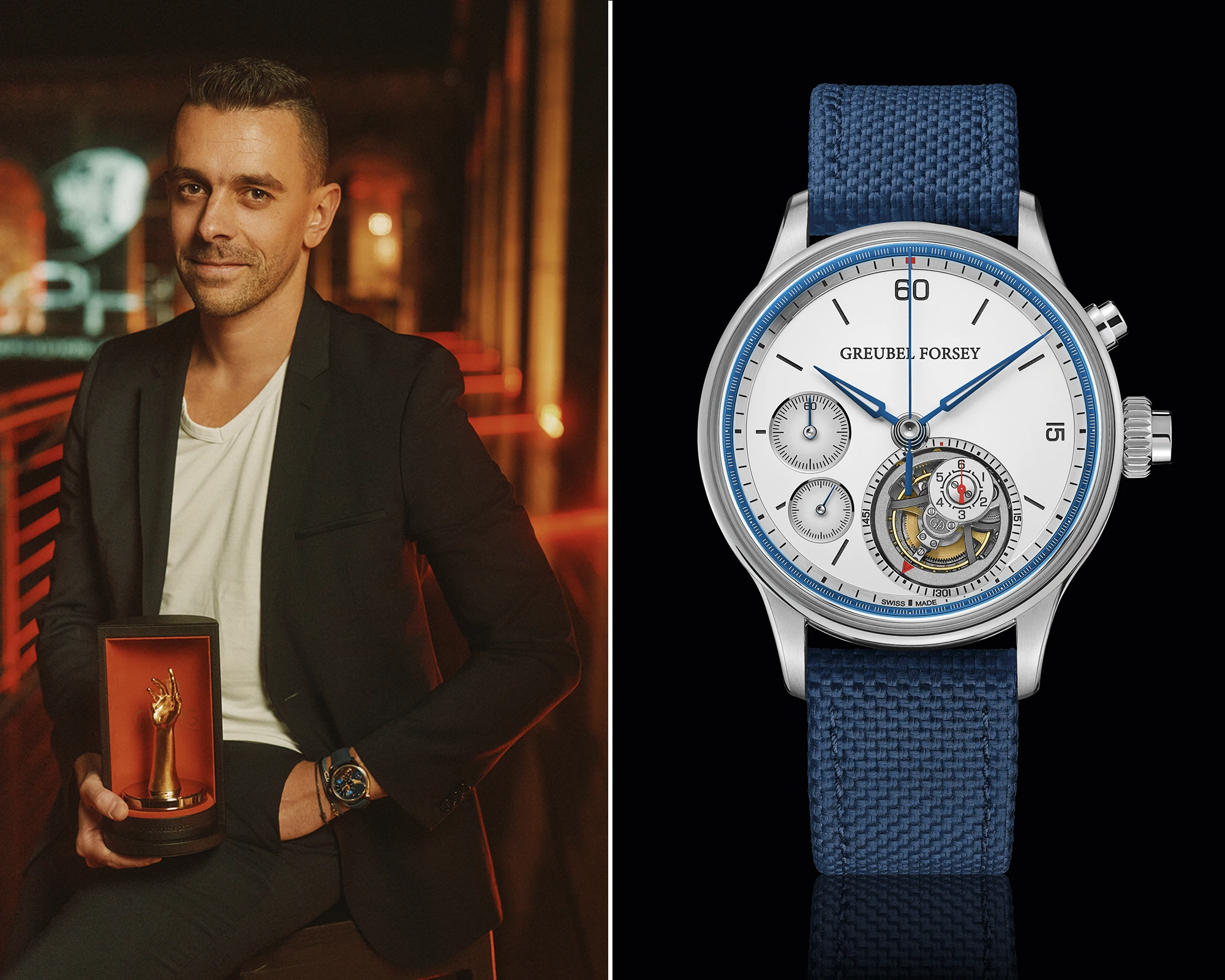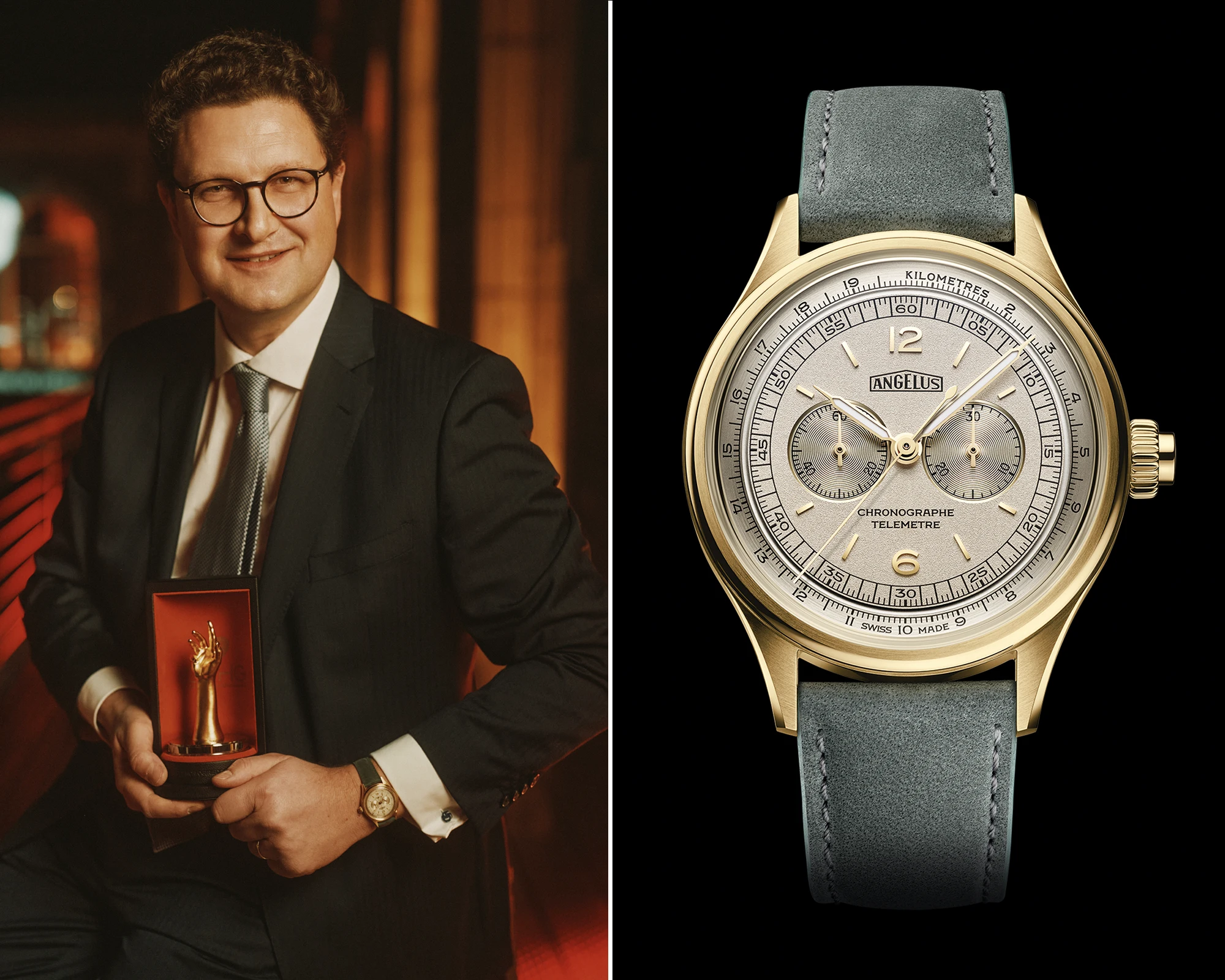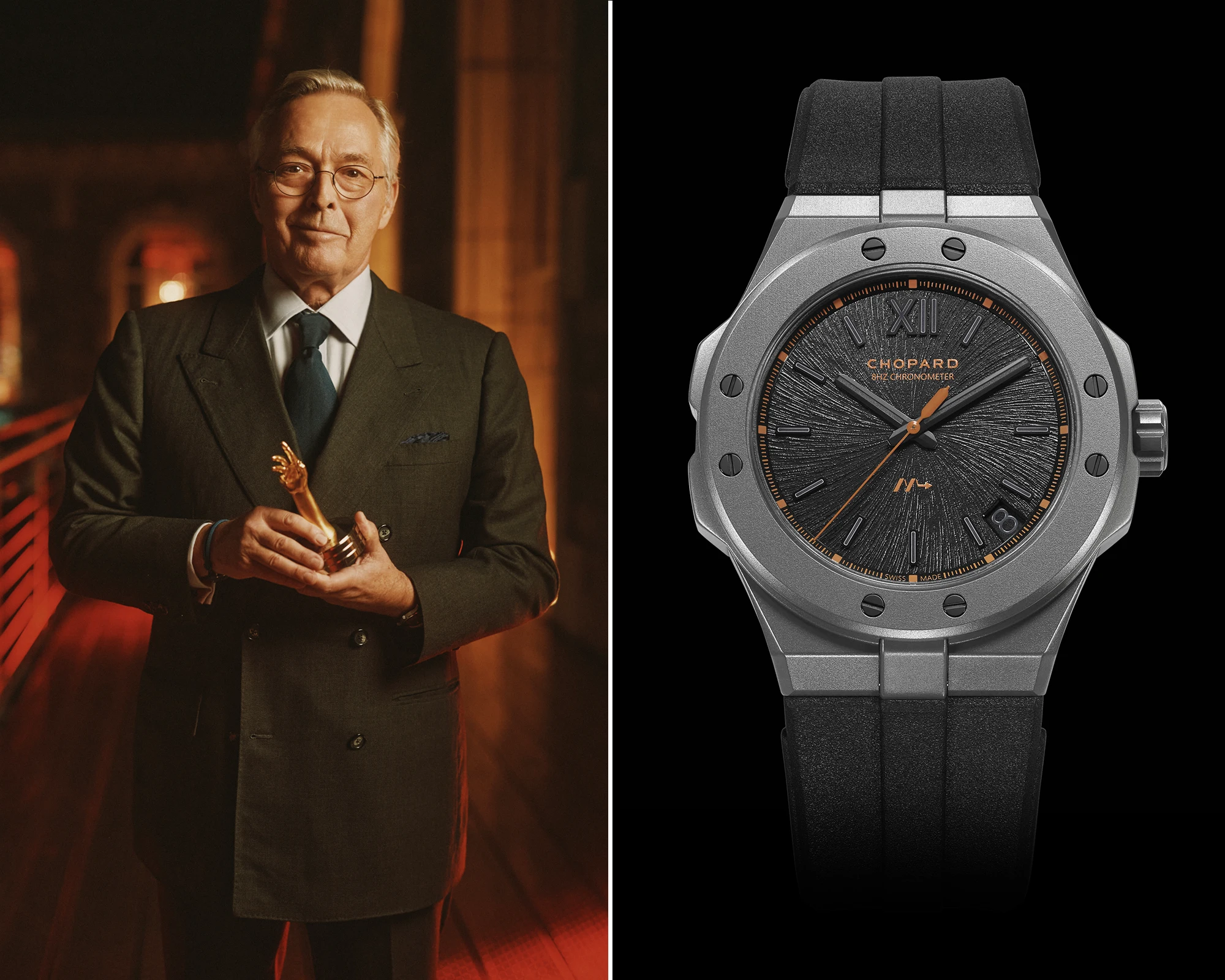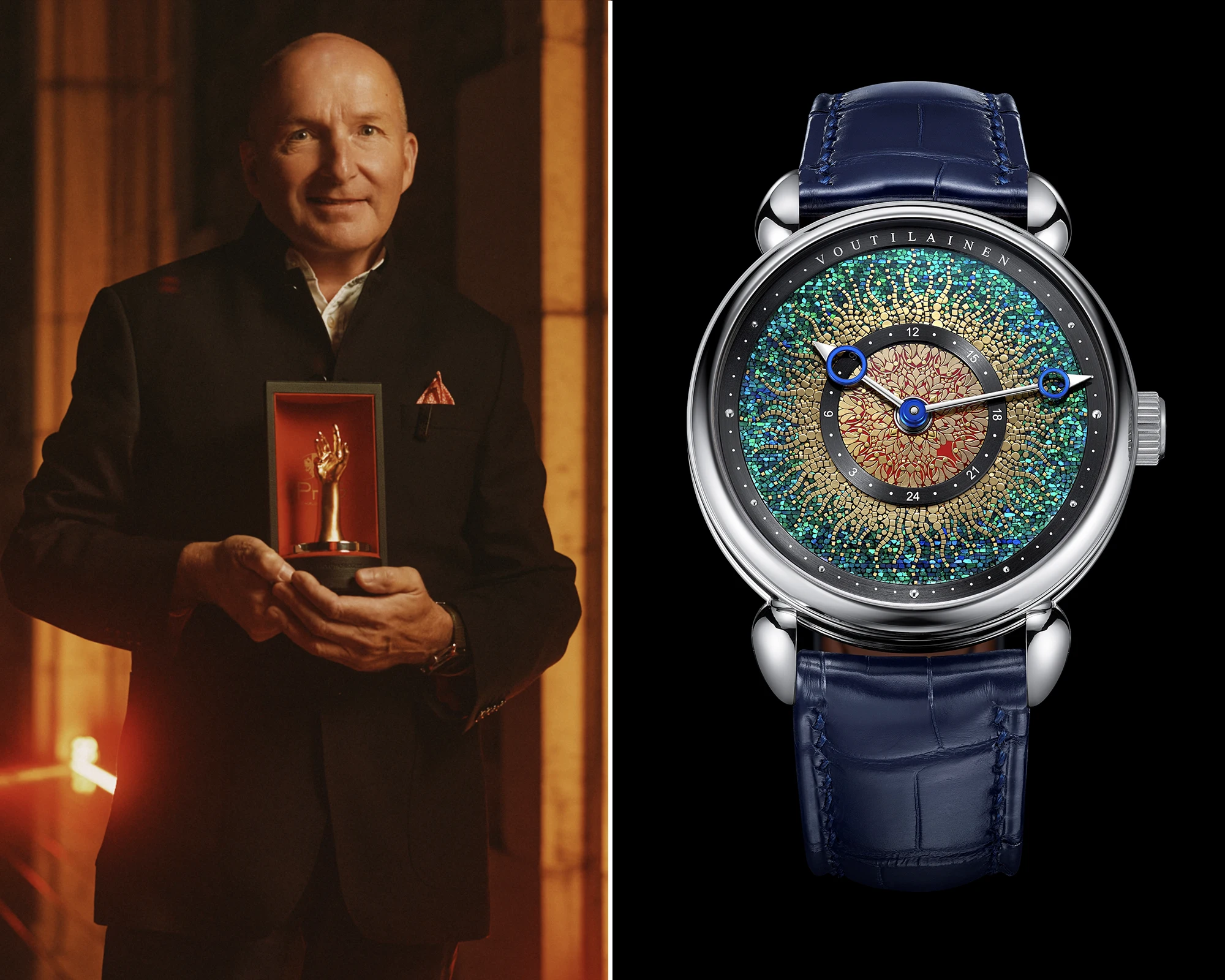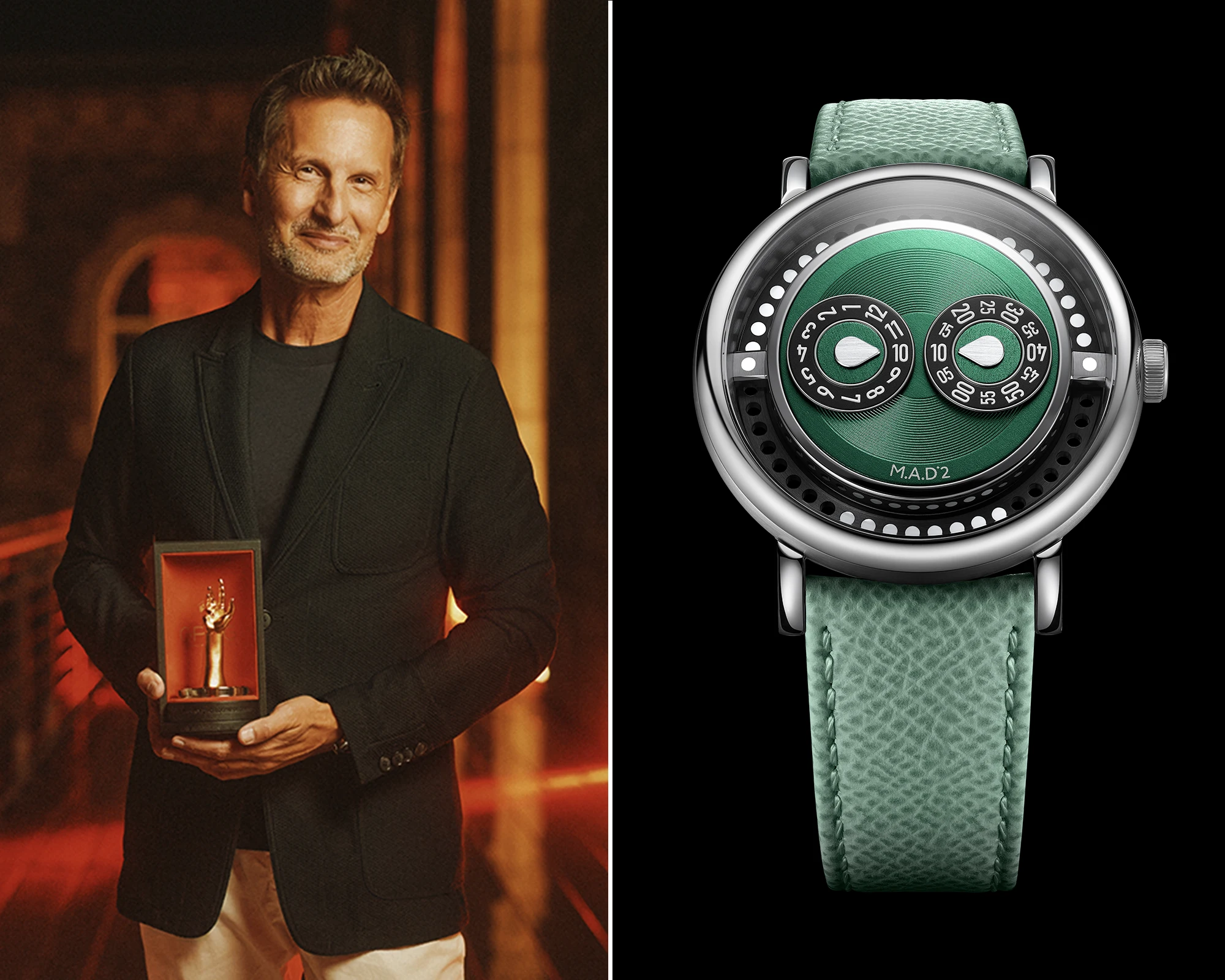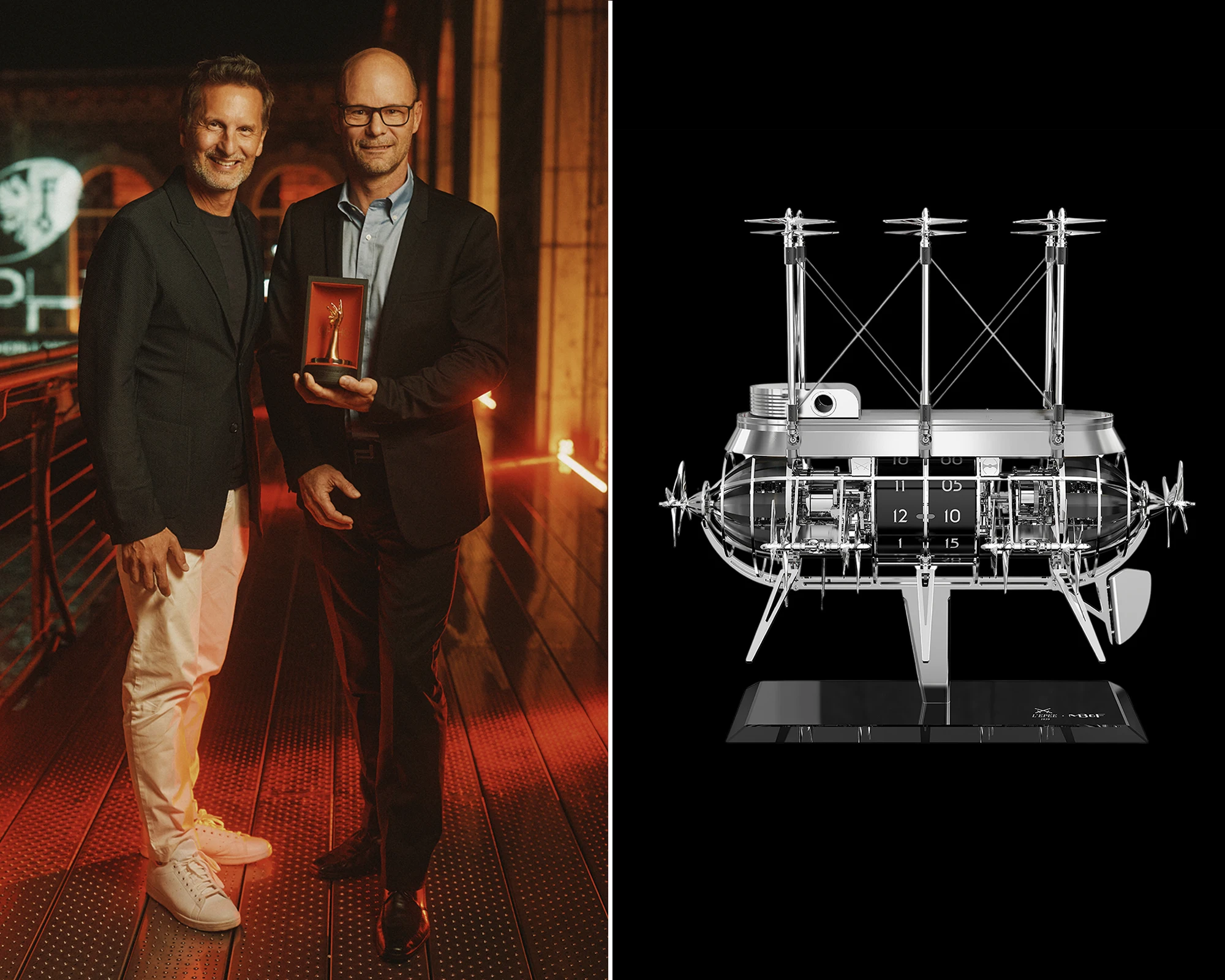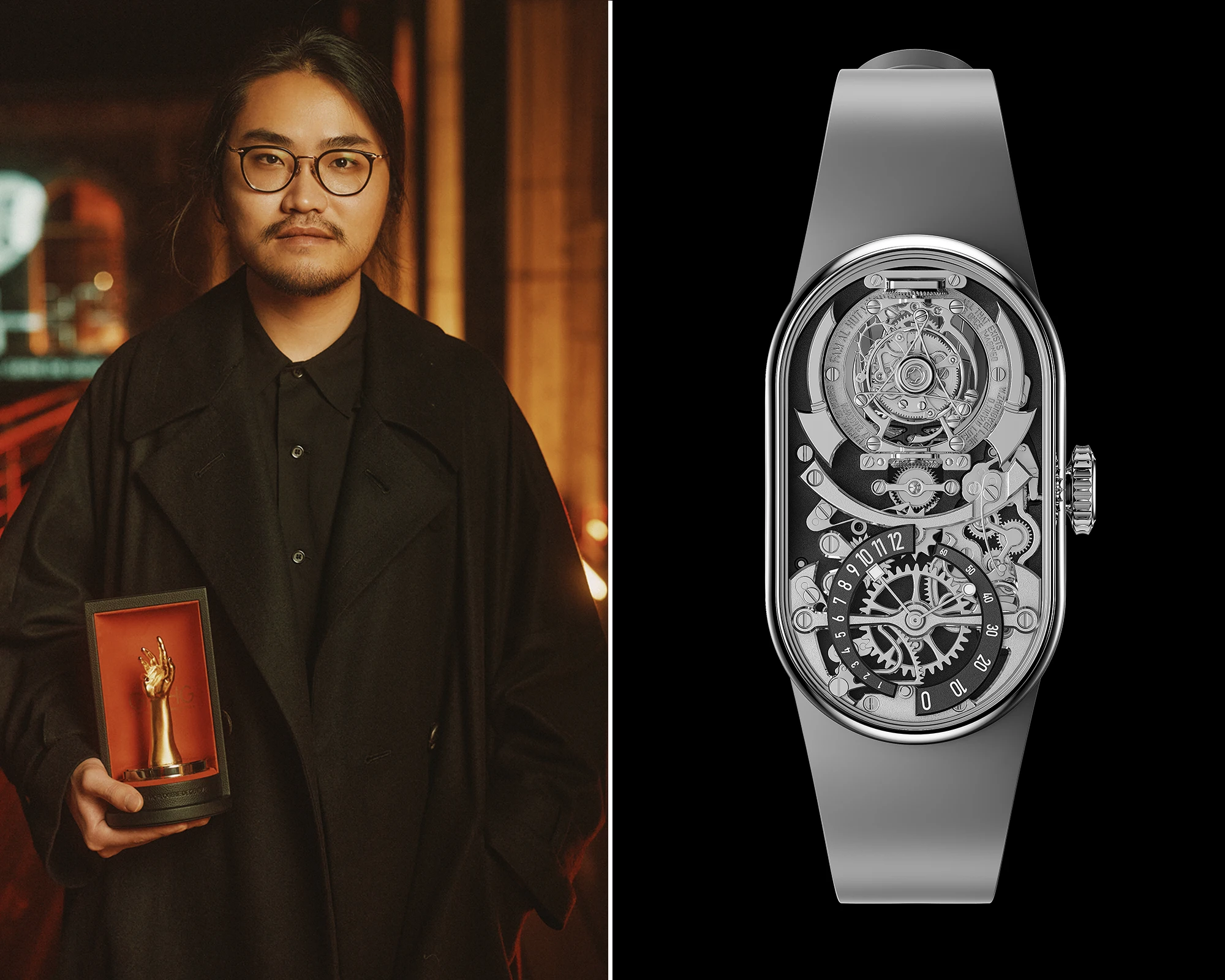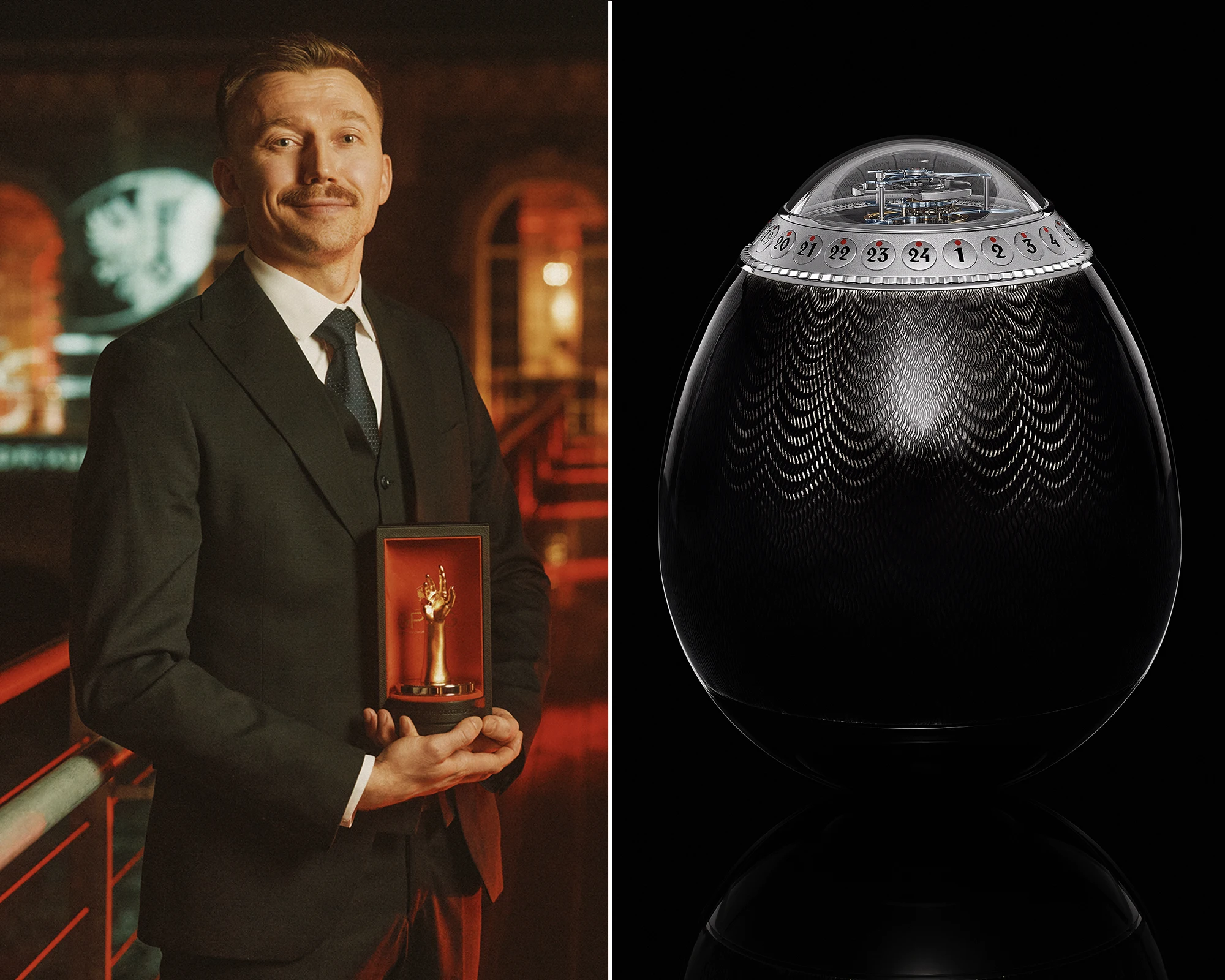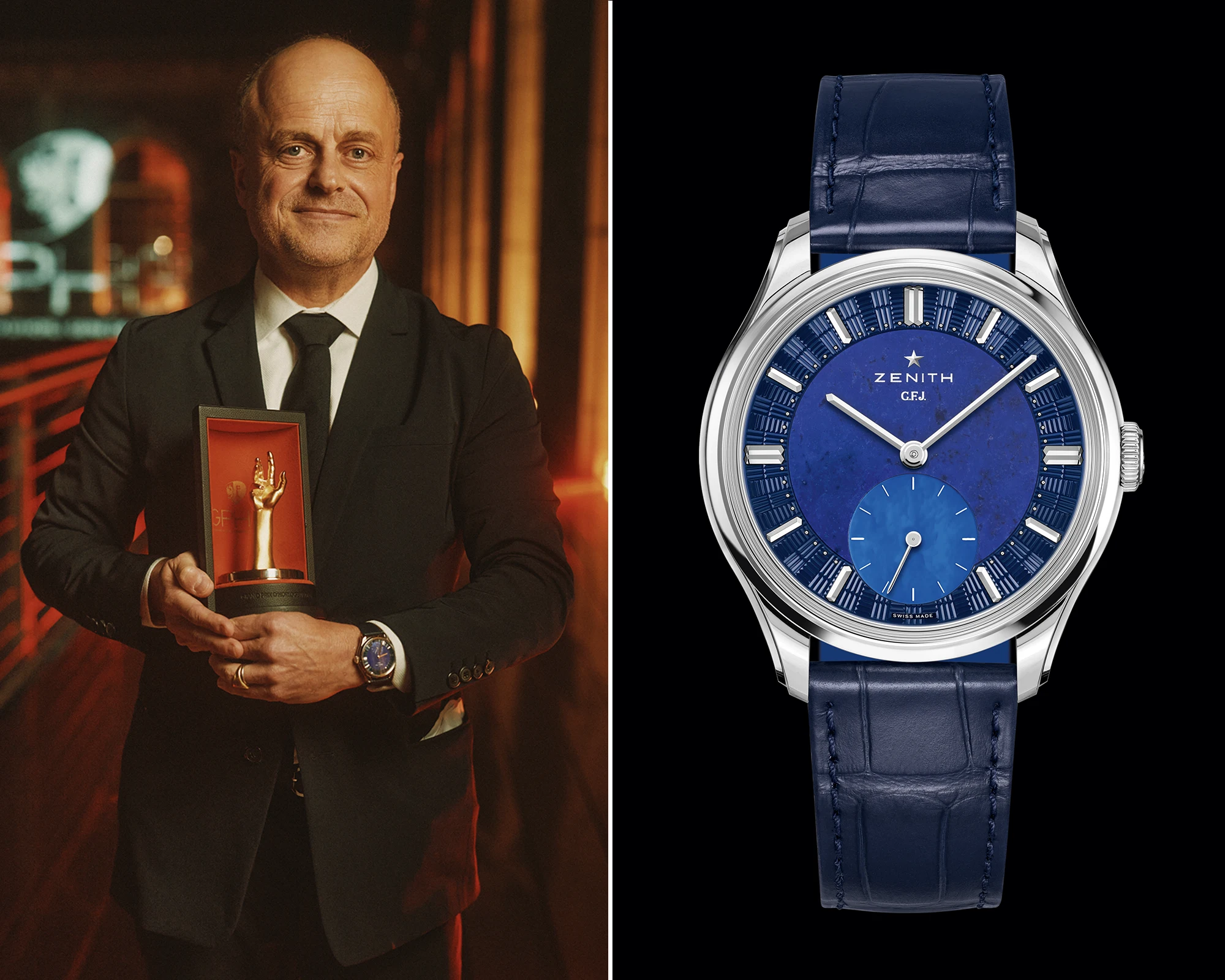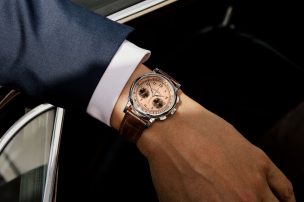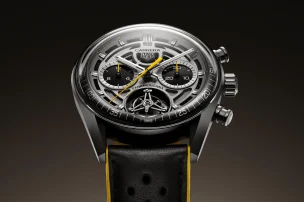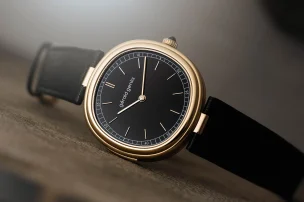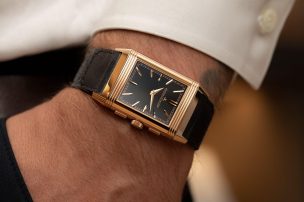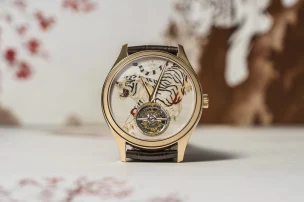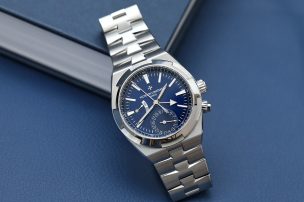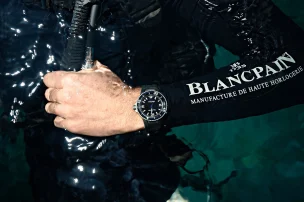
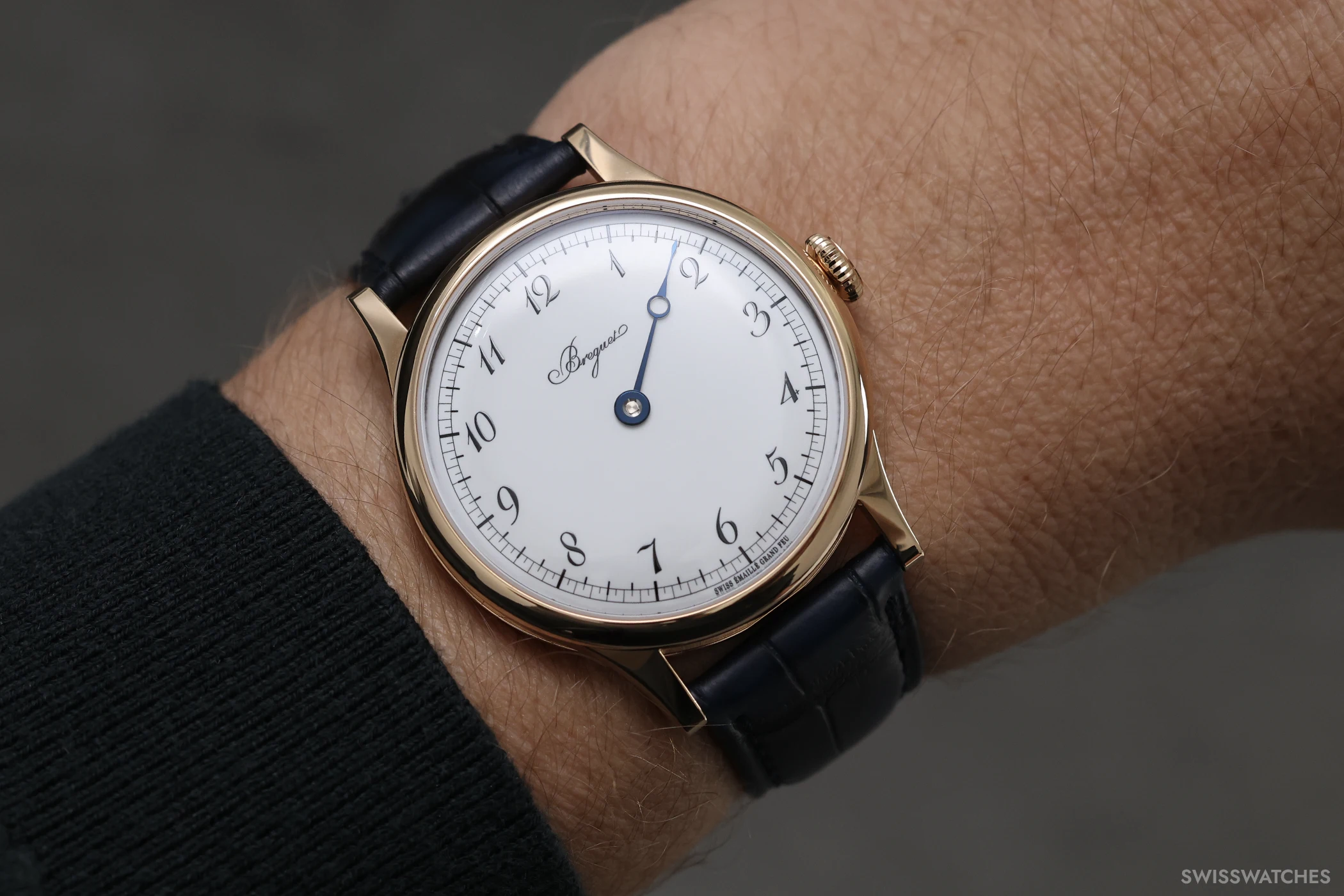
Grand Prix d’Horlogerie de Genève: Winners of the 2025 Edition at a Glance
The Grand Prix d’Horlogerie de Genève (GPHG) – which translates as the Grand Prize of Watchmaking of Geneva – has been awarded by the Federation of the Swiss Watch Industry (FH) since 2000 and is now regarded as the most prestigious accolade in the industry. In this article, we are revealing the winners of the GPHG 2025 competition categories.
‘Aiguille d’Or’ Grand Prix
The Aiguille d’Or Grand Prix, the highest distinction bestowed at the Grand Prix d’Horlogerie de Genève (GPHG) and effectively the overall prize for the year’s best watch, was awarded to the very first model with which Breguet opened its 250th-anniversary celebrations: the Classique Souscription 2025. This anniversary model is aesthetically inspired by the Montre de Souscription, which Breguet sold after the French revolution from 1796 onwards, when he needed to rebuild his business. To manage his financial obligations more effectively, he introduced a subscription model with this historic watch. It allowed him to revive his business through customers’ advance payments amounting to a quarter of the purchase price at the time and effectively introducing an early form of pre-ordering.
Aesthetically, the Montre de Souscription pocket watch was characterised by a white enamel dial with Breguet numerals, a single-hand display with a blued Breguet hand, and a movement whose shapes and design elements have all been transferred to the Classique Souscription 2025 anniversary model. Thus, Breguet also equips the Classique Souscription 2025 with a grand feu enamel dial featuring Breguet numerals – which, in keeping with the house’s tradition, are reserved exclusively for enamel dials – as well as a flame-blued Breguet hand with an open tip. A special feature here is a secret, almost invisible signature – complemented by the word ‘Souscription’ – both of which are only visible under the right light.
Ladies’ Watch Prize
In the Ladies’ Watch Prize category, the Gentissima Oursin Fire Opal claimed the win. The model once again draws on Gérald Genta’s design language, translating it into a 36.5 mm yellow-gold case set with 137 individually mounted fire opals. An orange carnelian dial with a distinctive texture picks up the tones of the opals. Inside, the automatic calibre GG-005 is at work – a modified Zenith Elite movement featuring a newly designed 18-carat yellow-gold oscillating weight. A faceted sapphire crystal and a slightly octagonal inner bezel reference the characteristic lines of the Gentissima collection. Both the case surfaces and the dial details are rendered entirely in yellow gold.
Ladies’ Complication Watch Prize
At the heart of the Chopard Imperiale Four Seasons is a rotating disc that completes a full revolution over the course of 365 days, symbolising the cycle of the seasons. The unique charm of the watch lies in this disc, crafted from painted, textured mother-of-pearl and displaying a motif that changes continuously with its slow rotation. The spectacle of the Imperiale Four Seasons is driven by the calibre L.U.C 96.31-L – an automatic manufacture movement equipped with the so-called ‘Four Seasons module’. Comprised of 227 components, the calibre offers a 65-hour power reserve thanks to the Chopard Twin technology and is developed and assembled entirely in-house. This combination of technical and aesthetic finesse enabled the watch to secure the prize for the GPHG 2025 best complicated ladies’ watch.
Time Only Prize
The Time Only Prize at the GPHG recognises the best watch that displays only the time – hours, minutes, seconds – and includes no additional complications. This year, the award went to the Extra Plat Rose Gold by Daniel Roth, a name well-known to watch enthusiasts and collectors alike. The brand, founded in 1988 by the eponymous watchmaker, is renowned for its characteristic double-ellipse cases and high-quality timepieces. After a long hiatus, the brand is now celebrating its comeback with new models developed in collaboration with La Fabrique du Temps Louis Vuitton. The Daniel Roth Extra Plat Rose Gold serves as an homage to the original 1990 model. It is defined by its 7.7 mm-slim rose-gold case, a hand-guilloché dial, and the DR002 calibre visible through the sapphire caseback. The movement, developed by master watchmakers Michel Navas and Enrico Barbasini at La Fabrique du Temps Louis Vuitton, adopts the double-ellipse shape of the case while operating at a frequency of 4 Hz and offering a 65-hour power reserve.
Men’s Watch Prize
Urban Jürgensen, a brand whose origins date back to 1773, marked its official return this year with its collection comprising the UJ-1 Tourbillon, UJ-2 Time-Only and UJ-3 Perpetual. At present, Urban Jürgensen timepieces are manufactured and assembled entirely within Kari Voutilainen’s watchmaking facilities in Switzerland. Voutilainen also serves as co-CEO of the brand, alongside Alex Rosenfield, who is based in Los Angeles. The UJ-2 Time-Only has now been awarded the Men’s Watch Prize, which underscores the brand’s noteworthy comeback and honours the best men’s watch with the following displays: hours, minutes, seconds, date, power-reserve display, or classical moon-phase. On the dial, the UJ-2 Time-Only embraces classic restraint paired with asymmetry: the small seconds appear at 4:30, the central hands are positioned slightly higher, and the overall layout is completed by a power-reserve display at 12 o’clock. Through the sapphire caseback, one can admire the generously proportioned hand-wound calibre UJ-2, which uses a large single barrel, operates at a frequency of 2.5 Hz, and offers a power reserve of around 52 hours.
Men’s Complication Watch Prize
In 2001, Pascal Raffy – collector and connoisseur of haute horlogerie – acquired the historic Bovet name, setting out to restore the brand to a high level of watchmaking excellence. Since then, numerous technically sophisticated models have been created. One example is the Récital 28 Prowess 1, unveiled last year. It combined a world-time complication with an ingenious system of rollers to account for varying daylight-saving rules, complemented by a flying tourbillon and a perpetual calendar. Despite its technical prowess, the watch, with its diameter of 46.3 mm, height of 17.85 mm and sensitive functions, was not designed for everyday wear. A more minimalist and practical alternative followed in the form of the Récital 30 – a watch that places world-time at its centre while foregoing the tourbillon and perpetual calendar.
The roller system adopted from the Récital 28 can be set according to different time-zone standards: UTC, AST (American Summer Time), EAS (European and American Summer Time), and EWT (European Winter Time). This allows the watch to correctly display daylight-saving rules worldwide – irrespective of whether a region applies DST or not. The dial of the Récital 30 is characterised by a three-dimensional display comprising 26 rollers: 24 black rollers for the cities, rotating in sync with the central 24-hour disc, plus two additional rollers – one for setting daylight-saving time and one for the 24-hour indication. In total, 25 time zones can be read. As with classic world time watches, the central hands indicate the local time, while the inner 24-hour ring is linked to the rotating city rollers. Thanks to this mechanism, the Récital 30 claimed the Men’s Complication Watch Prize as the best complicated men’s watch.
Iconic Watch Prize
To mark the start of its 150th anniversary, Audemars Piguet is unveiling a new generation of its automatic perpetual calendar movement: the calibre 7138. For the first time, all adjustments can be made via a single crown – an approach that significantly simplifies operation and improves legibility. The new movement makes its debut in a 41 mm Code 11.59 variant in white gold, as well as in two 41 mm Royal Oak models in either stainless steel or sand gold; the latter being the watch that has now won the Iconic Watch Prize. This prize honours a model considered a design or technical ‘icon’, one that has maintained lasting relevance over many years – often decades.
Tourbillon Watch Prize
This year, Bulgari took part in Watches and Wonders for the first time and presented the Octo Finissimo Ultra Tourbillon, showcasing the brand’s specialty: the development of ultra-thin timepieces. With a case height of just 1.85 mm, the Octo Finissimo Ultra Tourbillon claims the prestigious title of the world’s thinnest tourbillon watch, marking Bulgari’s tenth world record in this segment in just eleven years. In doing so, the brand surpassed the record set only in 2024 by Piaget: its Altiplano Ultimate Concept Tourbillon, at 2 mm, had previously been the slimmest watch featuring this complication. The exceptional thinness of the Octo Finissimo Ultra Tourbillon is made possible in part by its baseplate, crafted from ultra-hard tungsten carbide and serving simultaneously as the caseback, as well as the hand-wound calibre BVL 900, which beats at 28,800 vibrations per hour and, despite its low height, offers a 42-hour power reserve. This achievement is best illustrated when comparing the new model with Bulgari’s first record-setting piece from 2014, the Octo Finissimo Tourbillon: the current model, including the case, is flatter than the tourbillon movement alone was at that time. The GPHG honoured this leap in innovation with this year’s Tourbillon Watch Prize.
Mechanical Exception Watch Prize
After its first appearance as an EWT prototype in 2024, the Nano Foudroyante was released as a fully-fledged wristwatch in October 2025. Limited to 22 pieces, it presented itself in white gold with a rhodium-plated dial and blue accents. At the heart of the watch lies a breakthrough in nanomechanics: the foudroyante divides each second into six steps, requiring only 16 nanojoules per jump – around 1,800 times less energy than conventional mechanisms. It is driven directly by the 3 Hz balance wheel, with no traditional gear train in between. The mechanism is housed within Greubel Forsey’s first flying tourbillon, deliberately positioned at twelve o’clock to maintain consistent clarity of the display. Despite comprising 428 components – 142 of which are dedicated to the tourbillon cage alone – the movement is so compact that it fits into a 37.9 mm case, making it the smallest Greubel Forsey watch to date. The special edition has now captured the GPHG 2025 Mechanical Exception Watch Prize, which is awarded to models that clearly go beyond the ordinary in terms of their construction or mechanics.
Chronograph Watch Prize
The Angelus Chronographe Télémètre Yellow Gold won in the Chronograph Watch Prize category, which honours the best chronograph of the year. Released in April this year as a 15-piece limited edition in yellow gold, the Chronographe Télémètre forms part of the La Fabrique collection and, with its 37 mm diameter, is the smallest Angelus model to date. The case, with its sculpted, curved lugs, draws on the brand’s historical aesthetic. The off-white dial combines a satin-brushed chapter ring with a grained centre, separated by a diamond-polished ring; the small seconds and 30-minute counter feature circular graining, while the applied indices are made from 3N gold. The watch is powered by the in-house hand-wound calibre A5000 – an integrated mono-pusher chronograph with a 42-hour power reserve, 3 Hz balance, column wheel, and horizontal clutch. Measuring 4.20 mm in height and 24 mm in diameter, the movement fits perfectly within the compact case format.
Sports Watch Prize
This year, the Chopard Alpine Eagle collection, first launched in 2019, welcomed a new addition: the Alpine Eagle 41 SL Cadence 8HF, a limited edition of 250 pieces. With a case, crown, and bezel crafted from ceramised titanium and paired with a rubber strap, it is the lightest watch ever introduced in the collection. Inside, the Chopard calibre 01.14-C beats at an impressive 8 Hz (57,600 vibrations per hour), ensuring precise timekeeping even under shock, combined with a power reserve of 60 hours. Even the movement itself is lighter than its predecessors thanks to a mainplate and bridges made from ceramised titanium. Owing to these attributes, the Alpine Eagle 41 SL Cadence 8HF secured the GPHG 2025 Sports Watch Prize.
Jewellery Watch Prize
The Jewellery Watch Prize, which recognises the best jewellery watch of the year, was awarded to the Dior Montres La D de Dior Buisson Couture. This jewellery watch draws directly on lush garden motifs. Here, time takes a secondary role: the dial, bezel, crown, and caseback are entirely set with 1,088 precious stones – diamonds, pink sapphires in multiple shades, and tsavorites in brilliant, pear, oval, and marquise cuts. The time display is discreetly integrated at three o’clock, with gold hands set with diamonds. It takes around 480 hours to manufacture the watch, with more than 150 hours spent on setting the stones by hand alone.
Artistic Crafts Watch Prize
With the 28GML SOUYOU, presented in June this year, Voutilainen unveiled a pièce unique featuring a dial created by Japanese artist Tatsuo Kitamura. The dial showcases a highly contrasting colour composition of blue-green combined with gold and red tones, produced over more than a thousand hours of manual work using urushi lacquer, gold powder, cut gold leaf, and abalone inlays – decorative elements fashioned from the iridescent inner shells of abalones (sea ears). Home time is shown on a central 24-hour disc, while local time is set via the crown. The hand-crafted calibre 28GML measures 30 mm, operates at 18,000 vibrations per hour, and uses a large free-sprung balance with rose-gold weights, a Breguet overcoil on the outside, and a rare Grossmann inner curve. The movement comprises 211 components, has 27 jewels, a 65-hour power reserve, and hand-finished parts made of German silver and gold. As a one-of-a-kind piece, it earned the Artistic Crafts Watch Prize, recognising it as this year’s most outstanding work of artistic craftsmanship.
Petite Aiguille Prize
The concept behind M.A.D. Editions dates back to 2014, when Max Büsser, founder of MB&F, conceived the idea of creating a watch intended for his friends and family rather than for collectors or watch connoisseurs. The people who mattered most to him simply could not afford MB&F watches, which troubled him deeply. The first result of this idea was offered to 500 members of the ‘Tribe’ (as the brand refers to its long-standing partners, suppliers, and clients) in June 2021: the M.A.D 1 Blue, whose aesthetic was defined by a dial-side triple-blade rotor, a time display using two rotating cylinders, and a crown positioned at twelve o’clock in the style of a pocket watch. In March this year, the second chapter of the M.A.D. series followed: a watch that differs markedly from the M.A.D 1 both in concept and appearance. Designed by Eric Giroud – designer and long-time friend of MB&F – this timepiece is a love letter to 1990s club culture. This is reflected above all in its dial, inspired by the Technics SL-1200 Mark 2 turntable that once spun the house beats of the era. The main section of the dial therefore features two subdials for hours and minutes, each modelled after a DJ mixer’s turntables. Housed in a 42 mm case, the M.A.D.2 Green secured the GPHG 2025 Petite Aiguille Prize this year. The Petite Aiguille Prize honours the watch in the mid-price segment between CHF 3,000 and 10,000 that offers the most compelling overall package.
Challenge Watch Prize
The Challenge Watch Prize recognises the most impressive mechanical quality in the entry-level or ‘accessible luxury’ category of watches priced at up to CHF 3,000. This year, the award went to the Dennison Natural Stone Tiger Eye in gold, offered at a price of CHF 660, which reinterprets Dennison’s classic cushion case from the 1960s. The PVD-gold-plated stainless-steel case measures 37 × 33.5 mm with a height of just 6 mm, making it unobtrusive on the wrist. The tiger-eye natural stone dial is individually cut and polished, lending each watch its own unique structure and colouration.
Mechanical Clock Prize
The Albatross L’Epée 1839 X MB&F is a tabletop automaton weighing nearly 17 kilograms and measuring 60 × 60 × 35 cm, composed of 1,520 components. It combines a time display on rotating discs with an hour-striking mechanism and an elaborate propeller automaton. The hours strike every hour, followed by a single strike on the half-hour; simultaneously, 16 pairs of propellers start moving, their direction of rotation mirrored on the left and right. A sophisticated mechanism, akin to a mechanical computer, allows multiple operating modes – full operation, complete rest, propellers only, striking mechanism only – as well as a recall function to trigger the selected combination or run the propellers independently. Two independent movements are at work: a calibre with two barrels for time and the hour strike, manually wound via the front propellers (clockwise for the strike, counter-clockwise for time), running typically for eight days; and a separate movement for the automaton, its single barrel wound via the rear propellers with around a one-day power reserve. Made of brass, steel and aluminium, the Albatross L’Epée 1839 X MB&F references Jules Verne’s dirigible ‘Albatross’ in its form and concept. It is the first clock with a ‘propeller hour’ function to be awarded the Mechanical Clock Prize.
Audacity Prize
The Audacity Prize at the GPHG is a special award for watches that demonstrate an unconventional approach to timekeeping. This category is not guaranteed to be awarded every year. The winner this time was the Mark 1 from Chinese watch brand Fam Al Hut. With dimensions of 42.2 × 24.3 × 12.9 mm (17 mm at the highest point of the tourbillon), the Fam Al Hut MARK 1 Möbius is one of the most compact bi-axial tourbillon wristwatches available. The watch is made of stainless steel and features a lugless case with a concave polish and domed sapphire crystal. It combines a bi-axial tourbillon with double retrograde displays for hours and minutes, as well as a jumping hour mechanism – a configuration that has never before been implemented in a wristwatch. Inside, the hand-wound calibre M-01t operates at a frequency of 3 Hz (21,600 vph) and offers a power reserve of around 50 hours.
Horological Revelation Prize
Anton Suhanov’s St. Petersburg Easter Egg Tourbillon Clock reinterprets the Fabergé egg in a modern, functional form. It consists of a polished stainless-steel base, a guilloché silver shell as the outer case coated with transparent enamel, and a domed sapphire crystal above the tourbillon and time display. A rotating bezel is used to set the time across all 24 time zones and allows the seconds to be read, as the tourbillon completes one revolution in 24 seconds. The sector for Moscow and St. Petersburg is visually highlighted. This model received the Horological Revelation Prize, a GPHG special category recognising brands that have been commercially active for less than ten years and have demonstrated convincing horological quality in a short period.
Chronometry Prize
A striking testament to Zenith’s watchmaking expertise is its long-standing participation in chronometry competitions since 1897: with 2,333 awards, Zenith is the most decorated watch manufacturer in history. These successes reached their peak with the calibre 135-O, developed specifically for competitions, which alone won 235 prizes. Between 1950 and 1954, it set a historic record by achieving five consecutive first-place awards in the wristwatch category at the Neuchâtel Observatory. For its 160th anniversary, Zenith reintroduced the calibre 135-O in a modern form, appearing for the first time in the new collection named after the founder, G.F.J. (Georges Favre-Jacot). The current version features an optimised 72-hour power reserve (up from 40 hours), improved tooth geometry, a frequency of 2.5 Hz (18,000 vph), and a seconds stop. Each movement is COSC-certified and regulated to a precision of +/-2 seconds per day. The watch housing this calibre is distinguished by a dark blue lapis-lazuli dial reminiscent of a starry sky, set within a 39.15 mm platinum case, and won the GPHG 2025 Chronometry Prize.
